Hoover House
Introduction
Text-to-speech Audio
Images
Hoover House
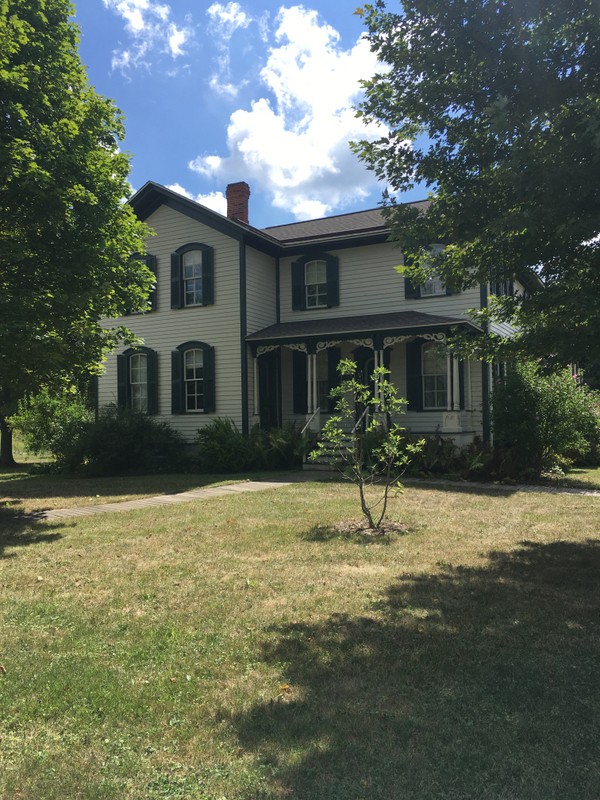
Balloon Framing
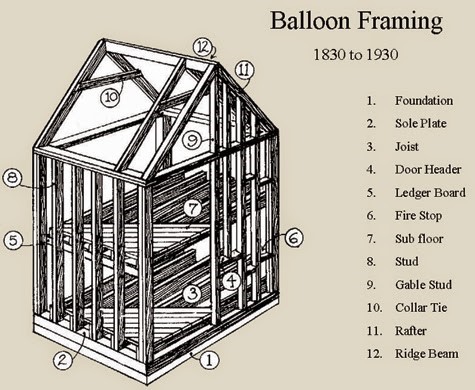
Mr. Hoover's office
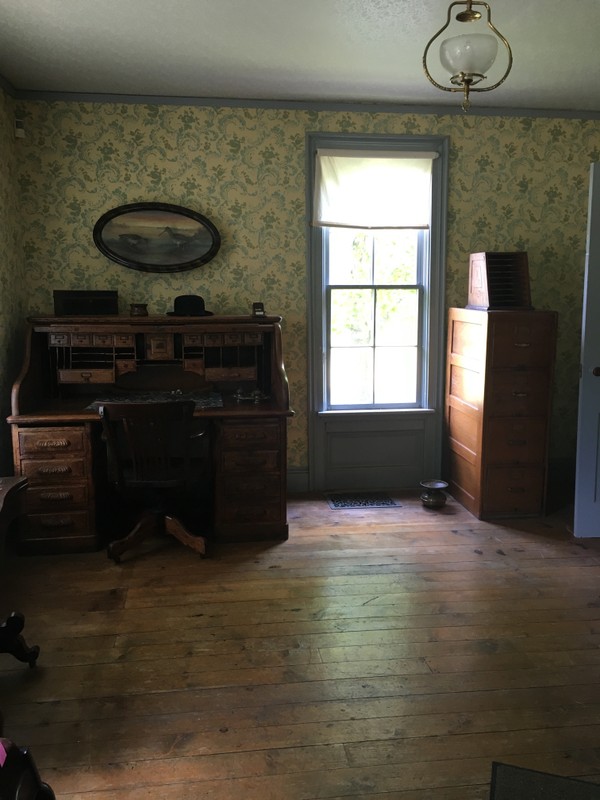
Dining room
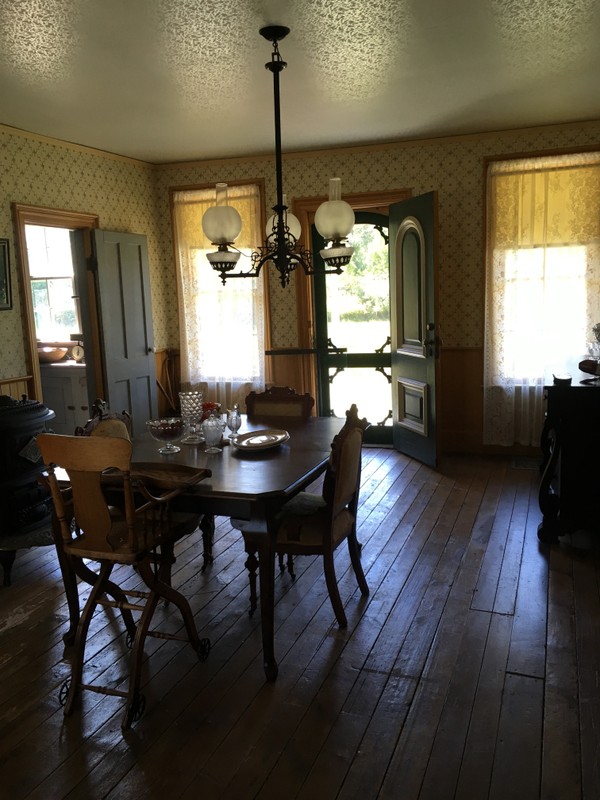
Kitchen stove

Kitchen sink
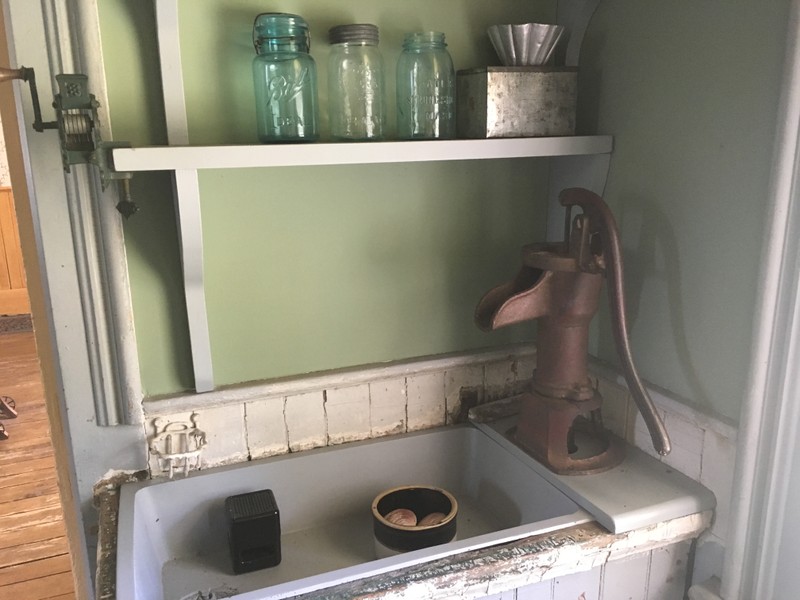
Parlor
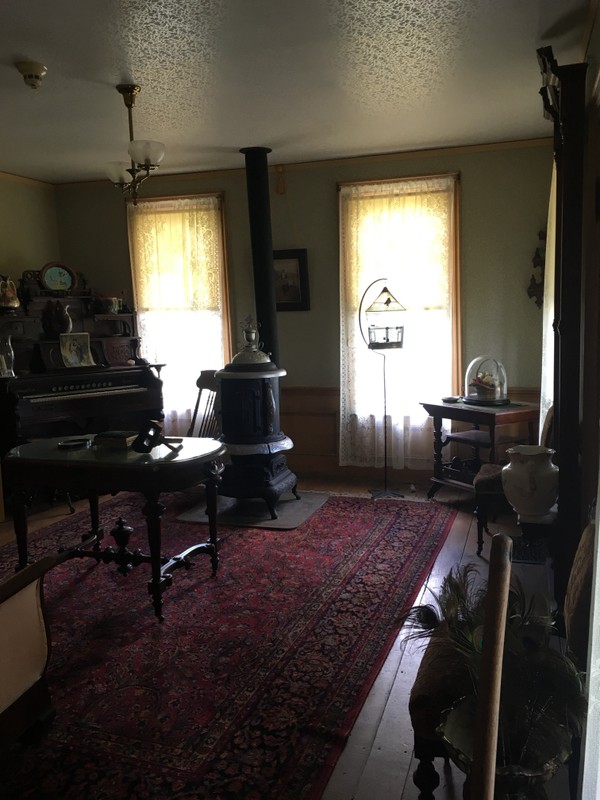
Parlor Organ
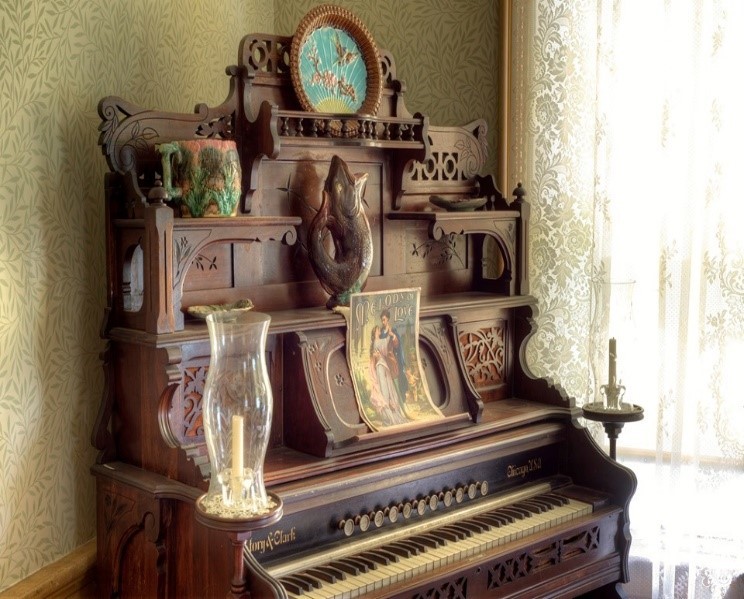
Stereoscope
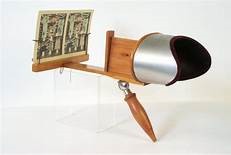
The Hoover House and farm is depicted in the lower left corner.
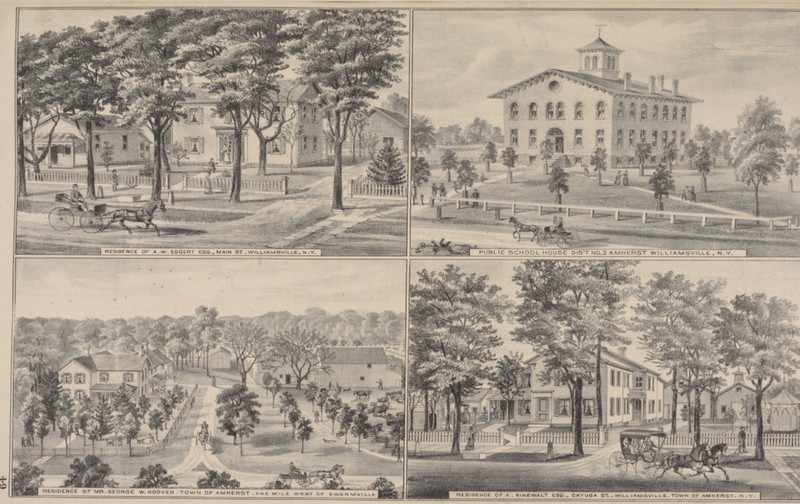
Backstory and Context
Text-to-speech Audio
Building Architecture:
The Hoover House was constructed in 1856 with an addition added in 1875. It depicts Vernacular Italianate Architecture with bonneted windows, bracketing and porch details. The Hoover House was built using the balloon framing construction technique. Balloon-frame, which was built from the early 19th century until World War II, poses unique firefighting problems because it lacks horizontal fire stops between the studs inside of the exterior walls. Most balloon-frame homes are two or three stories tall. This allows for unimpeded fire spread from the basement to the attic in a matter of minutes via the interior stud channels of the exterior walls.
Family History:
George W. Hoover was born in Amherst in 1826.
1852 – Mr. Hoover married Jane Nelson.
George and Jane had five children.
1868 – Jane Hoover died.
1869 - George married again to Ellen Fetterman .
George and Ellen had two children.
1870 – George was listed in the 1870 census as a “machine agent”.
1875 – George Hoover and Henry Seacrest were prime movers and first President and Secretary of a “farmer’s co-operative assessment company”. It was essentially an insurance company underwriting farm properties for losses suffered from fire or lightening. It was originally called the Erie and Niagara County Farmer’s Association. It grew and prospered and exists today as the Erie and Niagara Insurance Association. The current Erie and Niagara Insurance Association is a BNHV sponsor for the Hoover House helping to provide for its upkeep.
1884 – in The History of Erie County, George was listed as a “farmer and agent for agricultural implements.”
1908 – Mr. Hover died in Michigan.
Key Building Features:
Porch
The porch gave access to two entrances, one to Mr. Hoover's office and one to the residence’s parlor.
Office
Mr. Hoover's office is the first room that one enters upon visiting the Hoover House. Inside there is a roll-top desk, spittoon, hall rack, book shelf, parlor stove, Victorian era paintings, and a bird prepared by a taxidermist. You will also notice that both the walls and the ceiling are wallpapered.
One then moves from the office through a small bedroom, which was most likely the grandparents' room or a sick room, through the nursery and into the dining room.
Dining Room
The wallpaper in the dining room is an exact copy of wallpaper that was found during restoration of the Hoover House. There is a late Classical Empire Sideboard along the wall and a kerosene chandelier over the table which was eventually converted to electricity. You will also find another large Parlor stove in the dining room.
Kitchen
The kitchen and pantry are both located off the dining room. The Hoovers have a much grander stove than the Elliotts, and are lucky enough to have a sink with a water pump. Rain water was collected (from gutters and downspouts) into a cistern in the basement to which the water pump was connected.
Parlor
Off to the other side of the dining room was the parlor. Mr. Hoover's economic status allowed him to furnish this room with the finest furniture. Inside there is another parlor stove as well as a beautiful parlor organ. The Hoovers would spend their leisure time playing the organ or looking through their stereoscope.
Sources
Bowker, Gary. Fighting the balloon-frame construction fire, Fire Rescue 1. February 11th 2015. Accessed August 25th 2020. https://www.firerescue1.com/building-construction/articles/fighting-the-balloon-frame-construction-fire-r7WTUe6QEmgytrUY/.
Buffalo Niagara Heritage Village
https://i.pinimg.com/originals/5f/51/e6/5f51e6f6dfcff069d9815cbd0c713585.jpg
Buffalo Niagara Heritage Village
Buffalo Niagara Heritage Village
Buffalo Niagara Heritage Village
Buffalo Niagara Heritage Village
Buffalo Niagara Heritage Village
Buffalo Niagara Heritage Village
Buffalo Niagara Heritage Village
Buffalo Niagara Heritage Village
